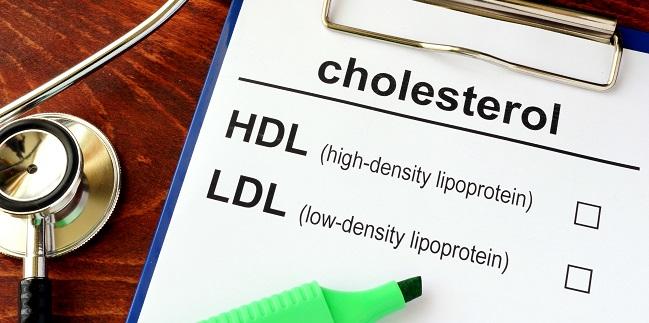LDL Levels Still Too High in Many Statin-Treated Patients: PINNACLE
The new analysis also showed that more than 20% of ASCVD outpatients weren’t taking any lipid-lowering therapy at all.

A contemporary snapshot of patients with atherosclerotic cardiovascular disease (ASCVD) suggests that only one-third are achieving sufficiently low enough LDL cholesterol levels with statin therapy.
Among more than 1.3 million statin-treated adults with ASCVD enrolled in the national outpatient PINNACLE registry between 2013 and 2019, 32.9% had LDL cholesterol levels less than 70 mg/dL and 25.9% had levels 100 mg/dL or greater. The remaining 41.1% of patients had LDL cholesterol levels ranging from 70 to 99 mg/dL.
“There is still large residual risk and a treatment gap in this population,” senior investigator Dharam Kumbhani, MD (UT Southwestern Medical Center, Dallas, TX), told TCTMD. “It clearly shows that there is a lot of work left to be done.”
The new cross-sectional analysis, which is scheduled for presentation on November 17, 2019, at the American Heart Association (AHA) 2019 Scientific Sessions in Philadelphia, PA, also suggested that younger patients, females, and African-Americans were less likely to reach the LDL cholesterol threshold of less than 70 mg/dL.
In 2018, the American College of Cardiology (ACC) and AHA released new guidelines for the treatment of cholesterol, awarding a class I indication for the reduction of LDL cholesterol levels by 50% or more with a high-intensity statin (atorvastatin 40-80 mg and rosuvastatin 20-40 mg), or a maximally tolerated statin dose, in all patients with clinical ASCVD. While the clinical guidelines do not adopt a treat-to-target approach or specific LDL cholesterol goals, the ACC/AHA expert consensus is that lower is better.
However, for very-high-risk patients, including those who have had previous cardiovascular events, ezetimibe is a recommended addition to high-intensity statin therapy if LDL cholesterol is 70 mg/dL or greater (class IIa). If LDL remains ≥ 70 mg/dL, adding a PCSK9 inhibitor such as alirocumab (Praluent; Regeneron/Sanofi) or evolocumab (Repatha; Amgen) is considered reasonable (class IIa).
One in Five Patients Untreated
From the PINNACLE outpatient registry, which is part of the ACC’s National Cardiovascular Data Registry (NCDR), investigators identified 1,897,204 individuals with ASCVD (defined as ACS, history of MI, stable or unstable angina, arterial revascularization, stroke, TIA, or peripheral artery disease). Of these, nearly 400,000 patients, or 21.1%, were not taking any lipid-lowering therapy. The majority of these untreated patients had LDL cholesterol levels ≥ 100 mg/dL and only 15.6% had LDL levels less than 70 mg/dL.
“For these 20% or so of patients who are not on statin, we don’t know if they’re not on a statin because they’re statin intolerant, in which case a PCSK9 inhibitor or ezetimibe could be potentially helpful,” said Kumbhani. “Or is this an implementation or knowledge gap on the part of the physician taking care of these patients? They should really be on a statin—they have a class I indication. It’s probably a combination of things in this group.”
While the control of LDL cholesterol levels among the 70% of patients with ASCVD taking statins doesn’t look particularly great, Kumbhani pointed out that they didn’t have access to data on statin doses. Still, the study provides a contemporary look at residual risk in outpatients with ASCVD.
“It would be helpful to understand how many are on a high-dose statin,” he said. “I would imagine that if the overall use of statins is 70%, a high-dose statin as recommended by the guidelines is certainly going to be a lot lower. Once you maximize the statin, if there is still a fair residue of risk, then perhaps other agents would be important to consider from a public health perspective.”
These interim data, said Kumbhani, will be used as part of the TRANSFORM LDL-C Risk project. This ACC initiative, funded by Regeneron and Sanofi, is aimed at identifying high-risk patients with a history of cardiovascular events related to ASCVD in order to pinpoint barriers to treatment and help them gain access to therapies proven to lower LDL cholesterol and ASCVD risk.
Michael O’Riordan is the Managing Editor for TCTMD. He completed his undergraduate degrees at Queen’s University in Kingston, ON, and…
Read Full BioSources
Allen JM, Arnold SV, Lohr NL, et al. Assessing low-density lipoprotein cholesterol risk in secondary prevention patients within the PINNACLE national outpatient registry. To be presented at: AHA 2019. November 17, 2019. Philadelphia, PA.
Disclosures
- Kumbhani reports no relevant conflicts of interest.


Comments